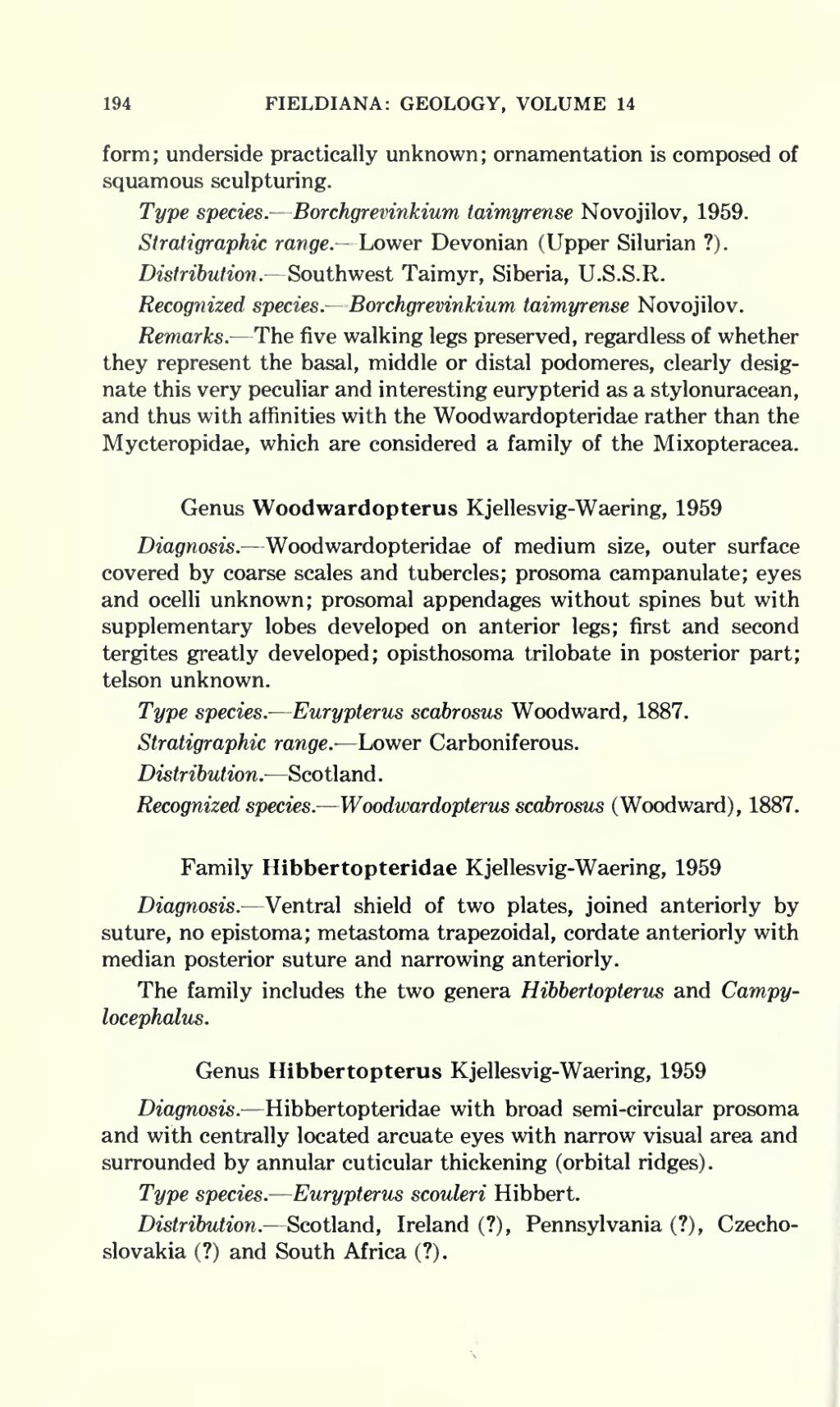form; underside practically unknown; ornamentation is composed of squamous sculpturing.
Type species.—Borchgrevinkium taimyrense Novojilov, 1959.
Stratigraphic range.—Lower Devonian (Upper Silurian ?).
Distribution.—Southwest Taimyr, Siberia, U.S.S.R.
Recognized species.—Borchgrevinkium taimyrense Novojilov.
Remarks.—The five walking legs preserved, regardless of whether they represent the basal, middle or distal podomeres, clearly designate this very peculiar and interesting eurypterid as a stylonuracean, and thus with affinities with the Woodwardopteridae rather than the Mycteropidae, which are considered a family of the Mixopteracea.
Genus Woodwardopterus Kjellesvig-Waering, 1959
Diagnosis.—Woodwardopteridae of medium size, outer surface covered by coarse scales and tubercles; prosoma campanulate; eyes and ocelli unknown; prosomal appendages without spines but with supplementary lobes developed on anterior legs; first and second tergites greatly developed; opisthosoma trilobate in posterior part; telson unknown.
Type species.—Eurypterus scabrosus Woodward, 1887.
Stratigraphic range.—Lower Carboniferous.
Distribution.—Scotland.
Recognized species.—Woodwardopterus scabrosus (Woodward), 1887.
Family Hibbertopteridae Kjellesvig-Waering, 1959
Diagnosis.—Ventral shield of two plates, joined anteriorly by suture, no epistoma; metastoma trapezoidal, cordate anteriorly with median posterior suture and narrowing anteriorly.
The family includes the two genera Hibbertopterus and Campylocephalus.
Genus Hibbertopterus Kjellesvig-Waering, 1959
Diagnosis.—Hibbertopteridae with broad semi-circular prosoma and with centrally located arcuate eyes with narrow visual area and surrounded by annular cuticular thickening (orbital ridges).
Type species.—Eurypterus scouleri Hibbert.
Distribution.—Scotland, Ireland (?), Pennsylvania (?), Czechoslovakia (?) and South Africa (?).
